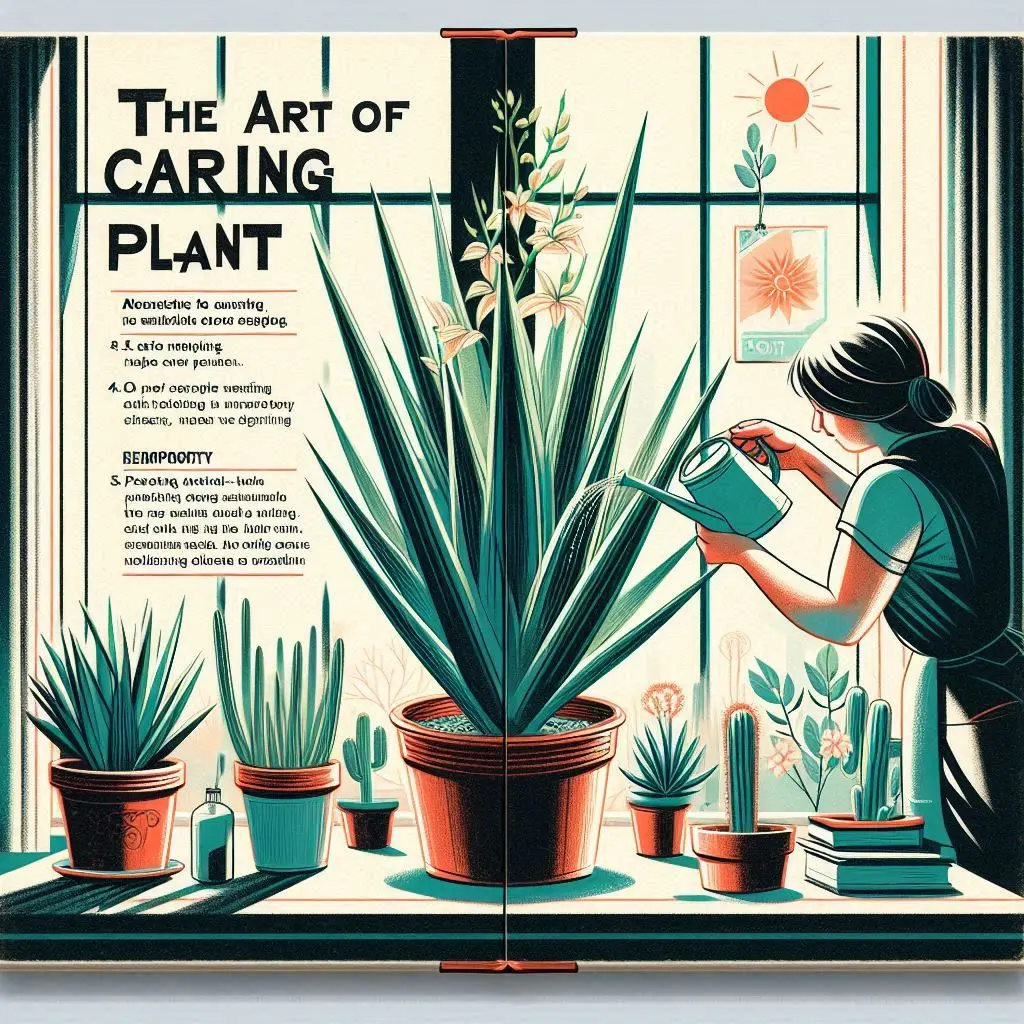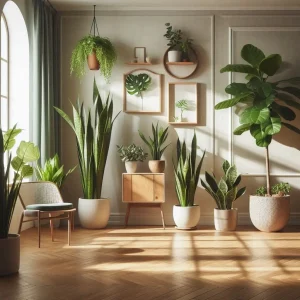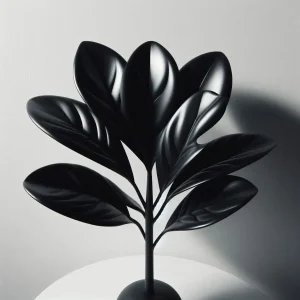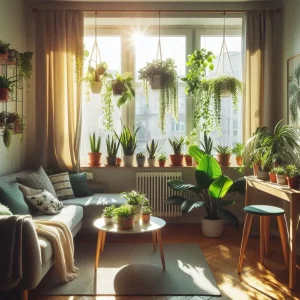The Yucca plant is a resilient and evergreen beauty, characterized by its sword-shaped, sharp leaves. It is among ornamental plants that require minimal watering, making it an ideal choice for those new to plant care. Yucca not only adds aesthetic appeal but also boasts therapeutic properties through its fruit.
Caring for Yucca is straightforward, and it can easily thrive indoors in pots, apartments, workspaces, hallways, or outdoors. In this article, we will delve into a comprehensive exploration of Yucca care; stay with us for valuable insights on how to nurture and cultivate this remarkable plant.
| Feature/Care Aspect | Description |
| Botanical Name | Yucca |
| Propagation Methods | Stem cuttings, seeds, rhizome division, and using offsets from the mother plant. |
| Preferred Light Conditions | Thrives in bright, indirect light. Can tolerate some direct sunlight but may scorch in intense sunlight. Use plant growth lamps if natural light is insufficient. |
| Temperature Range | Ideal temperatures between 60-80°F (15-27°C). Avoid exposure to temperatures below 30°F (-1°C). |
| Soil Requirements | Well-draining soil mix. A combination of light potting mix with perlite or sand is suitable. |
| Watering Needs | Allow the soil to dry out between waterings. Overwatering can lead to root rot. Water sparingly in winter. |
| Common Issues | Yellowing leaves (insufficient light), discoloration (excessive light), small/pale leaves (nutrient deficiency), blackening/rotting (overwatering), fungal diseases. |
| Pests | Aphids, spider mites. Control with insecticidal soap or neem oil. |
| Fertilizing Frequency | Feed with a balanced liquid fertilizer every 4-6 weeks during the growing season (spring and summer). |
| Pruning Needs | Remove dead or damaged leaves regularly. Wear gloves due to the plant’s toxic sap. |
| Toxicity | Yucca sap is toxic if ingested. Keep away from children and pets. Use caution during handling and wear gloves. |
read more: Worst indoor plants
Yucca, a decorative plant, is native to Central and South America and belongs to the Lily family. Typically thriving in arid and dry regions, Yucca is divided into two categories: Yucca Outdoor and Yucca Apartment, both sharing a strikingly similar appearance. This evergreen plant exhibits minimal growth and is known for its sharp, sword-shaped leaves. Over 40 species of Yucca have been identified to date.
Yucca leaves are pointed and tapering, bright and soft in youth, while they darken and become coarse with age. The flowering stem of a mature Yucca appears every few years, bearing white, bell-like, pendant flowers. In Iran, this plant is also referred to as the “bell-shaped” plant. Various species of Yucca, such as Yucca Outdoor, experience growth seasons in spring and summer, with the best flowering period spanning from mid-spring to mid-summer. Yucca Apartment or solitary tree Yucca cannot withstand cold temperatures and is sensitive to frost.
The solitary tree Yucca thrives in well-lit locations. If the available light in an apartment is insufficient, special plant growth lamps can be used for maintenance. Propagating Yucca is easy, and it can be propagated through various methods. An essential consideration in Yucca care is the toxicity of its sap. All parts of the plant pose a danger to household pets (dogs and cats) and children, causing allergies, sensitivity, and itching. Therefore, it is advisable to keep it out of reach of children and pets. Additionally, wearing gloves is recommended during pruning and propagation.
Yucca Care Conditions:
Page Contents
Toggle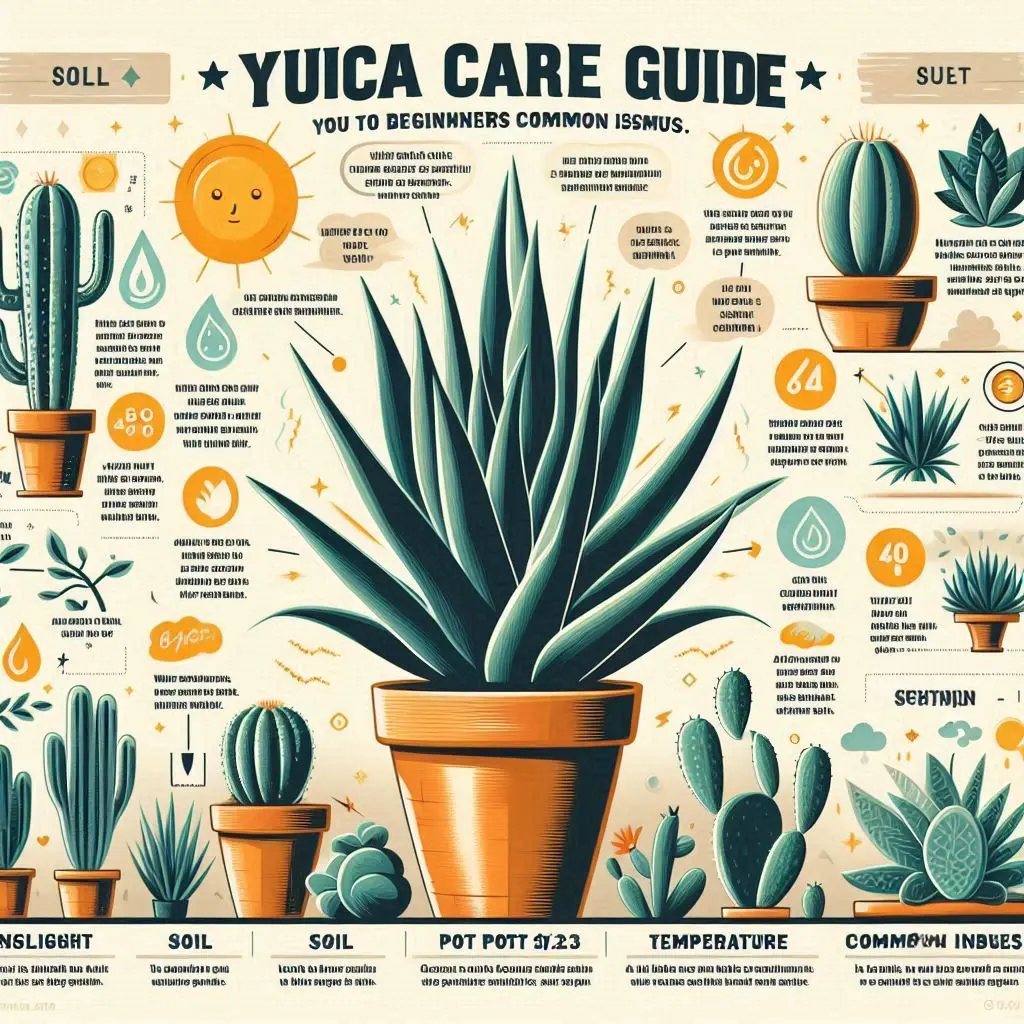
As mentioned earlier, caring for the Yucca plant is straightforward, making it suitable for those with limited experience in plant care. Yucca can be grown and cultivated in apartments, various work environments, and outdoors. Below, we will discuss the care conditions for Yucca, including watering, light requirements, soil, and more.
**Watering:**
Yucca predominantly grows in arid and dry regions, so it does not favor excessive watering, as it can lead to root rot and plant demise. During the plant’s growth season in spring and summer, you can water it up to three times a week. In fall and winter, reduce the watering frequency, providing water once every 7 to 10 days.
The best time to water Yucca is when the top 2 centimeters of the potting soil have dried out. Use a pot with proper drainage to prevent waterlogging and remove excess water. When watering Yucca, ensure that water does not spill onto its leaves.
**Temperature:**
Yucca is highly resistant to heat and temperature variations. The optimal temperature for Yucca maintenance ranges between 13 to 27 degrees Celsius, with the lowest tolerable temperature being 8 degrees Celsius. If you keep Yucca outside during winter, it is advisable to bring it indoors. In summer, when temperatures rise to around 40 degrees Celsius, relocate your Yucca to a cooler space and mist it with water spray.
**Light:**
Yucca requires indirect and ample light. In the case of the tree variety, the plant generally needs moderate light. A minimum of 6 hours of light is necessary, and if the provided light is less than this, it can result in the fading of Yucca’s beautiful leaves. Excessive direct light can cause leaf burn or shedding. Hence, ensuring sufficient and appropriate light is a crucial aspect of Yucca care.
The best method to provide the required light for Yucca is to use specialized plant growth lamps. The use of these lamps is essential to prevent leaf burn or shedding during intensely sunny days in summer and to compensate for insufficient ambient light, which might cause the lower leaves of the plant to turn yellow.
An important note about Yucca care is that if you plan to transition the plant from low-light to high-light conditions, do so gradually. This is because abrupt changes may lead to the formation of white spots on the undersides of the leaves. Plant growth panels are suitable light sources to meet the plant’s light requirements, available in various types depending on your plant’s specific needs.
**Soil:**
Yucca prefers well-draining, lightweight soil. If the soil does not have good drainage, it can lead to the accumulation of excess water around the roots, causing root rot. Various soil mixtures are used for the growth and maintenance of Yucca, and below are some options you can consider as suitable soil for your Yucca plant:
- A blend of two parts sand, three parts peat moss, and one part perlite.
- A mixture of sand, gravel, and perlite.
- A combination of garden soil, perlite, and peat moss.
Adding perlite generally improves soil drainage. For Yucca trees, it’s recommended to use loamy soil (a mixture of sand, clay, and organic matter) along with perlite for optimal results.
**Humidity:**
Yucca is resistant to dry conditions and can tolerate low humidity environments. This plant can endure humidity levels as low as ten percent. Yucca can be cultivated and maintained in indoor environments with average room humidity. If the surrounding air is excessively dry, you can enhance humidity by using methods such as misting with a water spray, employing a humidifier, or creating a humidity tray.
To create a humidity tray, place a layer of pebbles or gravel beneath the plant pot and add a small amount of water onto the tray, ensuring that the surface under the pot remains dry. This method helps to maintain higher humidity levels around the Yucca plant.
**Fertilization:**
Due to its slow growth rate, Yucca does not have a specific fertilizer requirement. However, during the growing season in spring and summer, when you aim for rapid and vibrant leaf growth, monthly fertilization is recommended. You can use complete fertilizers such as 36-12-12 or 20-20-20. To apply these fertilizers, dilute them to half the recommended strength and then use them for fertilizing. Before applying fertilizer, ensure that you water the soil surface.
In winter, you can fertilize the Yucca plant every two to three months. Adjust the frequency and strength of fertilization based on the specific needs and growth patterns of your Yucca.
**Over-fertilization:**
Excessive fertilization can result in the development of brown spots on Yucca leaves, eventually leading to leaf shedding and yellowing of lower leaves. If you have over-fertilized your Yucca, move the pot to the sink and wash the soil thoroughly to remove excess fertilizer salts. Then, use fresh and clean soil for replanting your Yucca.
**Pruning Yucca:**
Yucca plants do not require specific pruning; however, for a more aesthetically pleasing appearance, especially in indoor settings, you can trim the lower, yellowed, and mature leaves using sharp and sterile pruning shears.
**Cleaning Yucca Leaves:**
To clean Yucca leaves, you can use a sponge or a soft, damp cloth. Avoid using chemical shine enhancers to clean Yucca leaves.
**Repotting Yucca:**
As mentioned, Yucca has slow growth, and it does not need to be repotted annually. Repotting can be done every two to three years. The best time for repotting is during the spring season. An indication that it’s time to repot is when the roots start protruding from the pot. While you may not need to repot annually, it’s advisable to replace the topsoil of the pot yearly. If complete repotting is not feasible, change the surface soil of the pot.
**Methods of Yucca Propagation**
Propagating Yucca plants is relatively easy and can be done at home using various methods. There are different techniques for Yucca propagation, including stem cuttings, seed propagation, division of rhizomes, and using offshoots from the mother plant.
One essential condition for successful Yucca growth after propagation is providing it with full, indirect sunlight. If these conditions aren’t met, the plant’s ability to grow and propagate effectively may be compromised. If adequate natural light isn’t available, special plant growth lamps designed for Yucca can be utilized. These lamps ensure uniform and sufficient light exposure for the Yucca plant.
Another important consideration during Yucca propagation is that the plant’s sap is toxic and can cause sensitivity and itching. It’s advisable to use gloves when handling Yucca. Below, we’ll discuss each of the Yucca propagation methods:
**Stem Cutting Propagation:**
Propagation through stem cuttings is one of the simplest methods. It’s recommended to take cuttings from the younger sections of the stem. These cuttings, about 10 centimeters long with leaves, root more easily than those from the lower parts of the stem. Use a sharp and sterile knife to separate the cutting from the stem.
Before planting the cuttings in soil, let them dry in a cool, dry, and dark place for 3 to 4 days. This ensures better root development. After this period, dip the ends of the cuttings in rooting hormone to expedite root growth. For planting, use a well-draining mix of light soil, perlite, and potting mix. Roots will typically start developing after two weeks, and once they are 6 to 8 weeks old, the Yucca can be transplanted into a larger pot.
**Seed Propagation:**
Another method of Yucca propagation is through seeds. To encourage good seed growth, scratch the seeds with sandpaper or a file before planting them in a well-draining pot with proper irrigation. Place the pot in a location with adequate sunlight, or use a plant growth lamp if natural light is insufficient. Water the soil every one to two weeks until a small sprout emerges. If no sprout appears during this time, allow the soil to dry completely before watering again.
**Propagation from Offshoots of the Mother Plant:**
One alternative method is using offshoots from the mother Yucca plant. These offshoots are small plants that grow alongside the mother plant. To separate them, carefully remove the mother plant from the pot, separate the offshoots, and replant them in suitable soil. Use a sharp and sterile knife for this process, ensuring minimal harm to the plant’s roots. Offshoots with at least four leaves are ideal for Yucca propagation.
**Propagation through Division of Underground Rhizomes:**
Another method involves dividing the underground rhizomes of the Yucca plant. Cut rhizomes into 8-centimeter sections, plant them in a shallow, sandy substrate, and place them in an environment with suitable warmth and light. Water the plant, and once it has rooted, transplant it into a pot with appropriate soil.
Remember, success in Yucca propagation requires attention to these methods and the specific needs of the plant during each stage of growth.
**Yucca Plant Diseases and Issues**
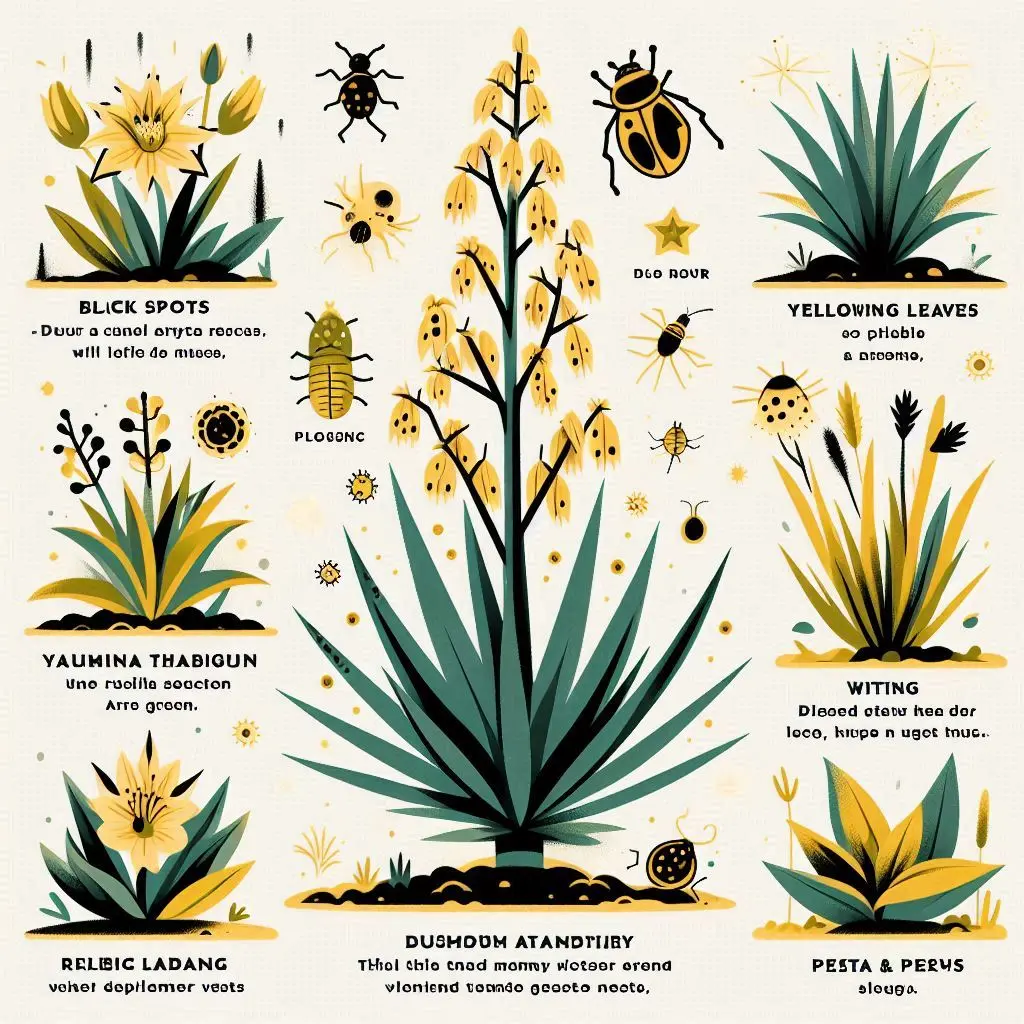
Like any other plant, Yucca can face various problems and diseases. In this section, we’ll address potential issues that may occur with the Yucca plant:
**Yellowing of Lower Leaves:**
This problem arises when the plant is not receiving sufficient light. In such cases, relocate the Yucca to a place with more light. If access to adequate natural light is not possible, consider using a specialized plant growth lamp for Yucca.
**Discoloration of Yucca Leaves:**
This issue is caused by excessive light and direct sunlight, resulting in damage to the leaves and roots of the Yucca plant.
**Small and Pale Yucca Leaves:**
Insufficient nutrients in the soil can lead to this problem. In such cases, provide appropriate fertilizer to the Yucca plant. Another factor contributing to this issue is excessive cold.
**Blackening and Rotting of Yucca Leaves:**
This problem occurs when the Yucca plant is overwatered. To address this, allow the soil surface to completely dry before watering again. You can create holes in the soil using an auger or any tool to enhance evaporation around the roots of the Yucca plant.
It’s essential to monitor the Yucca plant closely, address issues promptly, and provide the necessary care to maintain its health. Adjusting factors such as light exposure, watering frequency, and nutrient levels can help prevent and resolve these problems.
Read interesting facts about yucca plants from thelittlebotanical:
There are over 50 species of yucca plants, each with a different personality.The yucca is part of the asparagus family (Asparagaceae).Early American settlers called the plant ‘Lamparas de Dios’, which translates to ‘the Lamps of God’. This is because of the yucca’s white flowers, which lit the way during long, dangerous journeys.Some yuccas bear edible fruits, which look like a cross between a cucumber and a pepper. You can fry, stew or bake them as well as eat them raw.
Yucca Plant Decay Issues
**1. Stem Rot Due to Overwatering:**
Excessive watering and inadequate drainage in the pot can lead to fungal diseases, causing the stem and roots of the Yucca plant to decay. In some cases, bacterial presence can contribute to this problem and result in an unpleasant odor around the plant. To prevent this issue, use suitable soil and sterile pots.
**2. Coffee-colored Spots on Yucca Leaves:**
This problem is caused by fungal diseases. If you notice coffee-colored spots on the leaves, prune them, and spray a fungicide on the cut area and the entire Yucca plant. If a fungicide is not available, a mixture of water and dish soap can be used.
**3. Yellow and Orange Spots on Yucca Leaves:**
This issue is a result of a fungal disease affecting the Yucca leaves, creating wounds on them. The color of the lesions may vary, but it often occurs on mature leaves. Use a suitable fungicide to eliminate this disease.
**4. Grayish Spots on Yucca Leaves:**
Commonly caused by insufficient watering and excessive air dryness, grayish spots may appear along the edges of Yucca leaves. To address this, move the plant to a well-ventilated area and be cautious not to pour water on the leaves during watering.
**5. Mealybug Infestation on Yucca Leaves:**
Mealybugs can lead to a reduction in growth, yellowing, and leaf shedding in Yucca plants. To combat this issue, you can use insecticide spray to eliminate the infestation.
**6. White Mold on Yucca Leaves:**
If Yucca is placed in a cool and high-humidity environment, white and grayish molds, caused by a fungus called Botrytis, can form on the leaves. To address this problem, relocate the Yucca to a warm and dry environment, reduce watering, and use an appropriate fungicide.
**Frequently Asked Questions About Yucca Care:**
**1. Why are Yucca leaves turning yellow?**
This issue occurs when the plant is not receiving sufficient light. In such cases, move the Yucca to a location with more light. If adequate natural light is unavailable, use a specialized plant growth lamp for Yucca.
**2. Is Yucca poisonous?**
A crucial point in Yucca care is the toxicity of its sap. All parts of the Yucca plant are dangerous for household pets (dogs and cats) and children, leading to allergies, sensitivity, and itching. Keep it out of reach of children and pets. Use gloves when pruning and propagating Yucca.
For further assistance or clarification, feel free to ask.

